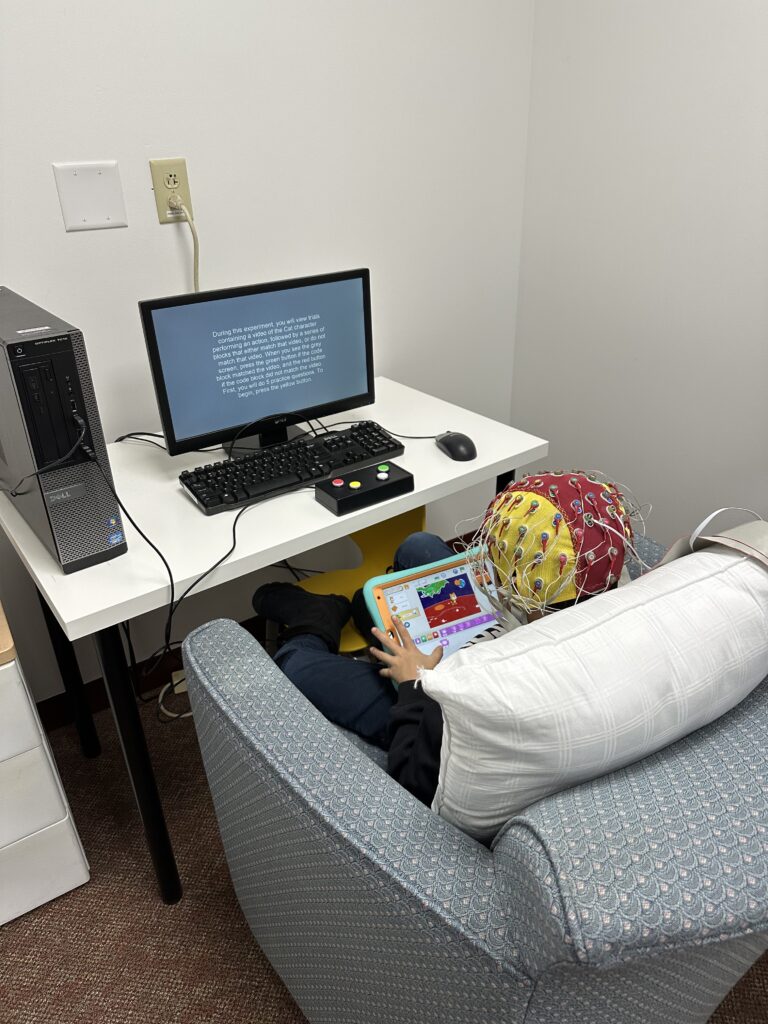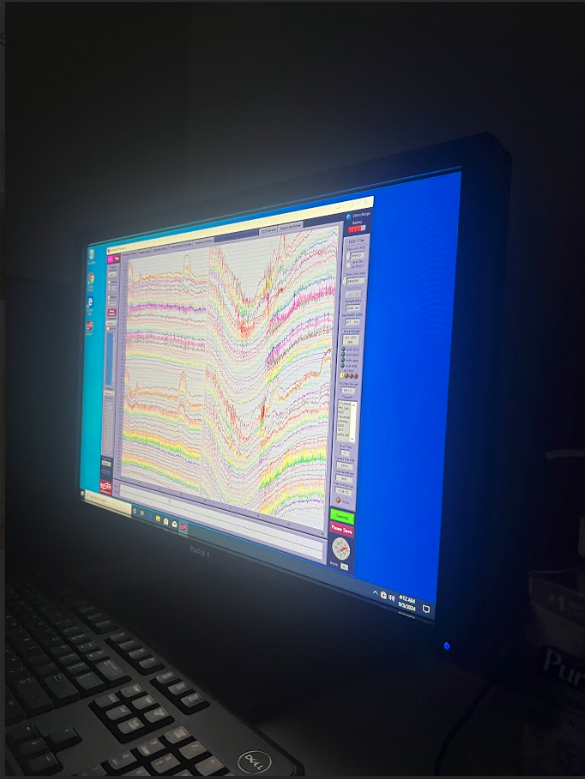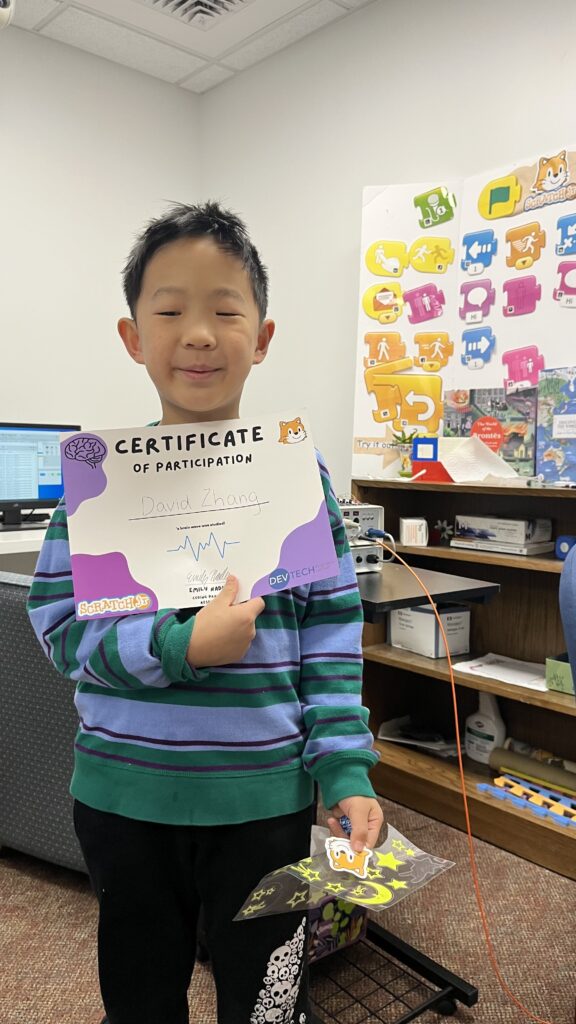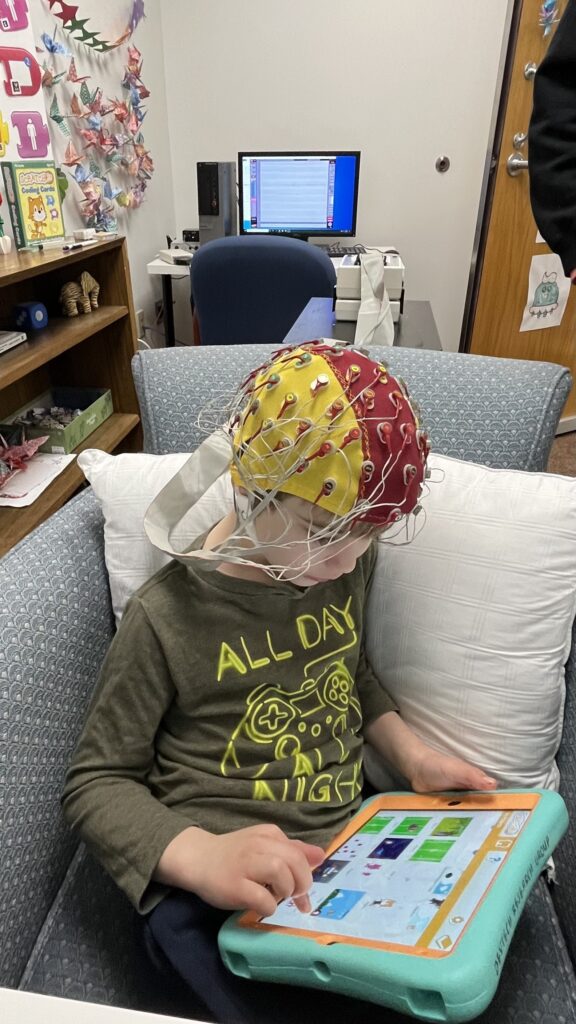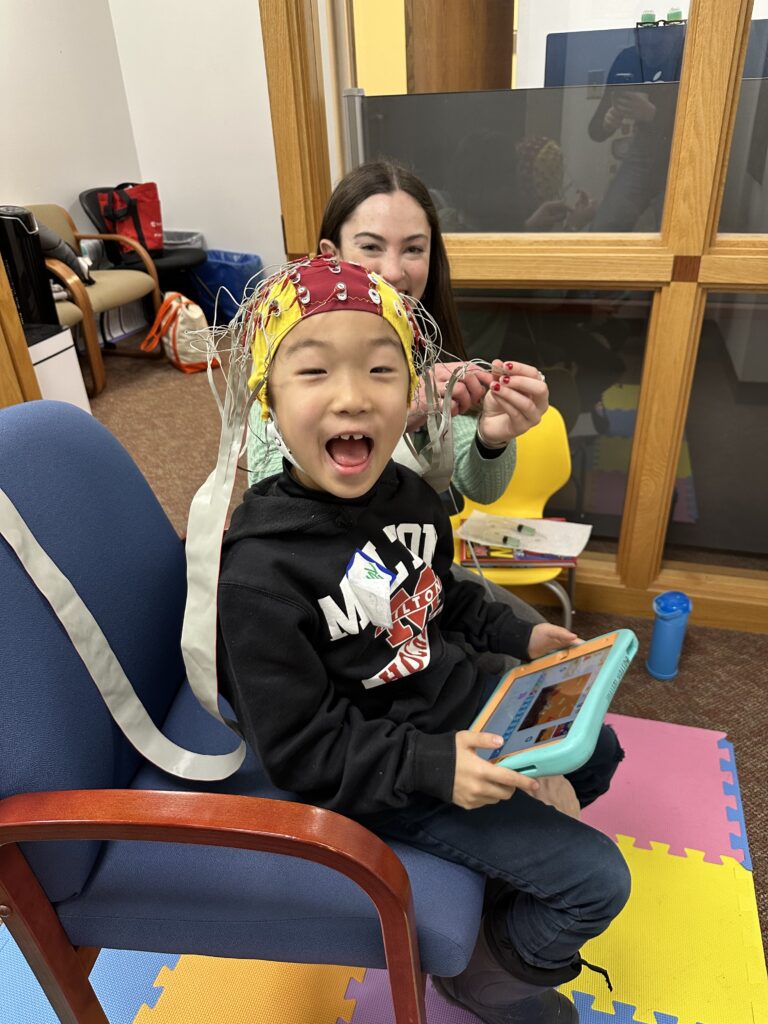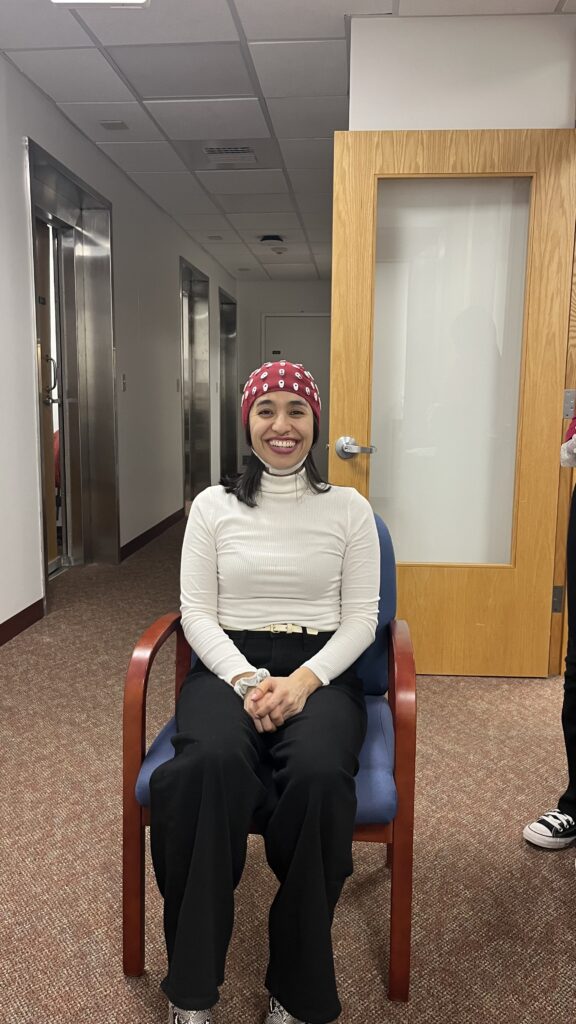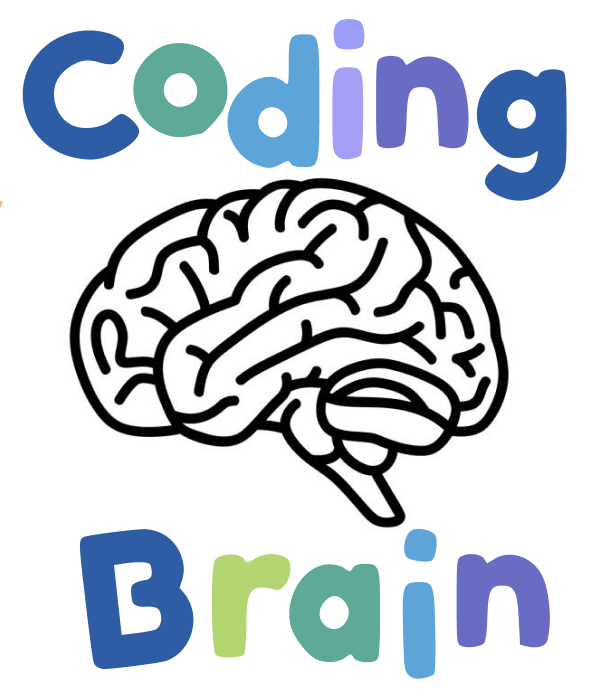
The push for early childhood education to promote the teaching of coding and computational thinking exists in tandem with an overall lack of basic scientific knowledge on the neural and cognitive mechanisms involved in the activity of computer programming. DevTech’s approach, which understands coding as another language since both are symbolic representations that one can use to tell stories, express themselves, and learn about themselves and the world around them, opens up questions about similarities and differences between mechanisms involved in both natural and artificial languages. This basic research can inform the development of curriculum and pedagogies.
DevTech has previously run two neuroscience studies with different tools and partners. In 2018, in collaboration with partners at MIT, DevTech ran an experiment using fMRI aiming to determine whether coding with ScratchJr activates the language areas of the brain. In 2023, in collaboration with partners at Tufts, DevTech ran an fNIR experiment to attempt to answer the same question.
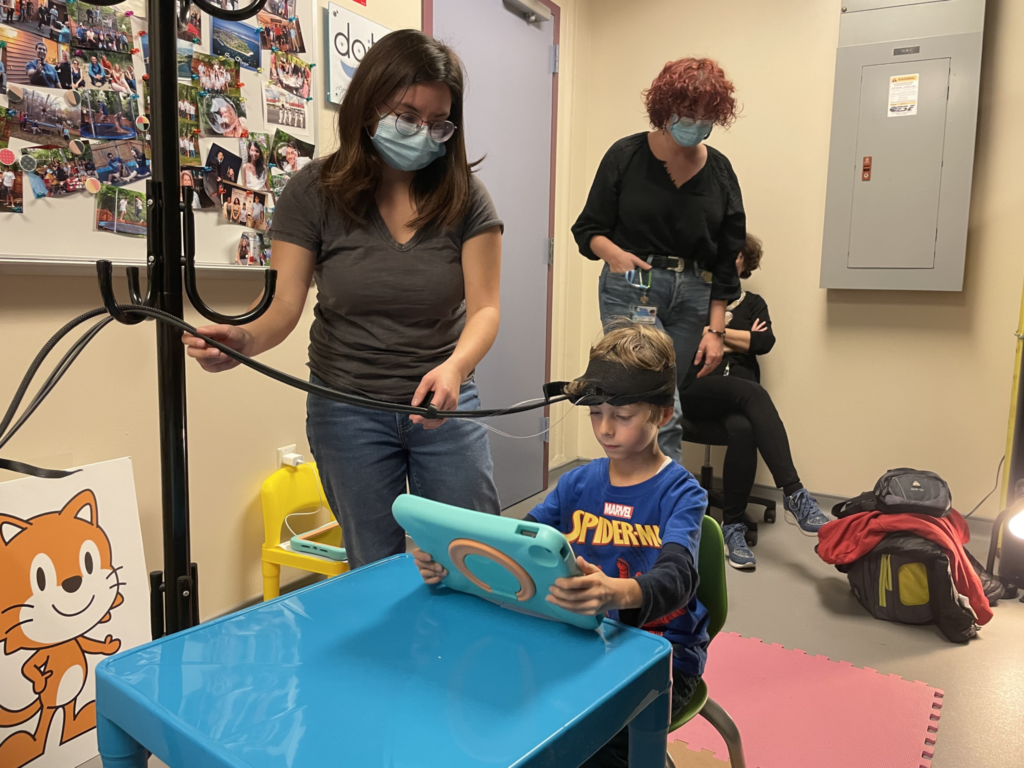
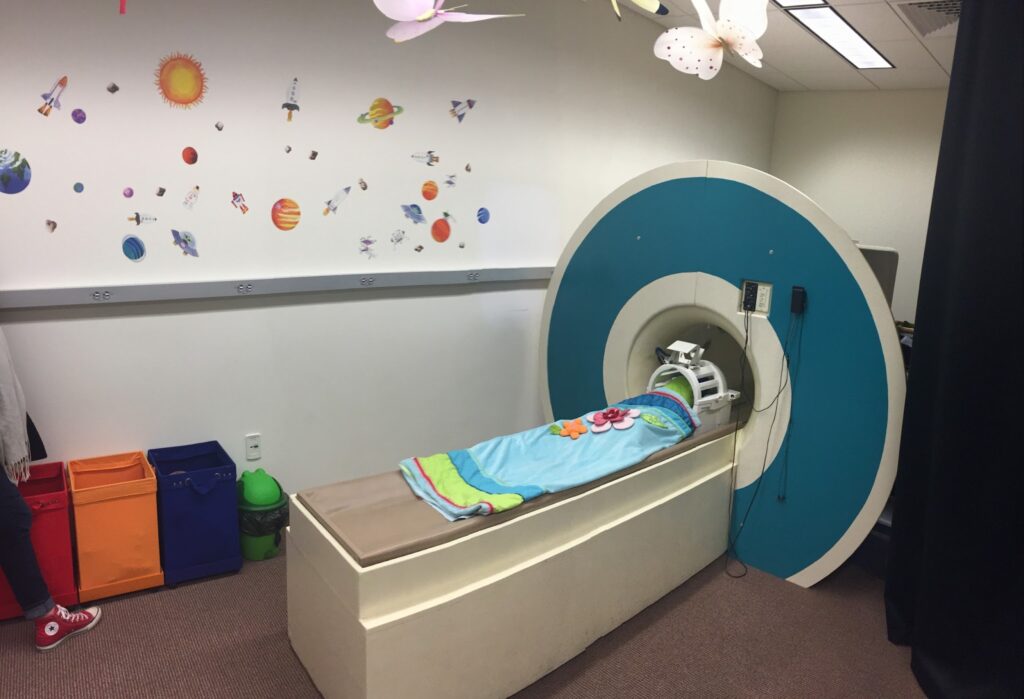
Most recently, DevTech has piloted and run an EEG study. An electroencephalogram (EEG) machine uses electrodes to measure electrical signals from the brain. This neuroimaging tool is non-invasive and safe. The electrical signals are then amplified, digitized, and displayed as a graph on a computer screen. In the Fall of 2024, DevTech piloted and ran the ScratchJr EEG Coding Brain experiment in 50 adults. Most recently, DevTech ran a Coding Brain Research Workshop and ran the EEG experiment on 8 kids aged 5-7.
Related Papers
Ivanova, A., Srikant, S., Sueoka Y., Kean, H., Dhamala, R., O’Reilly, U., Bers, M., Fedorenko, E., (2020). Comprehension of computer code relies primarily on domain-general executive brain regions eLife 2020, DOI: 10.7554/eLife.58906
Fedorenko, E., Ivanova, A., Dhamala, R. & Bers, M.U. (2019). The Language of Programming: A Cognitive Perspective. Trends in Cognitive Sciences, 23(7), 525-528. doi:10.1016/j.tics.2019.04.010
Ivanova, A., Srikant, S., Sueoka, Y., Kean, H., Dhamala, R., O’Reilly, U. M., Bers, M. U., & Fedorenko, E. (2019, October). The Neural Basis of Program Comprehension. Poster session presented at the Society for Neuroscience 2019, Chicago, IL.
